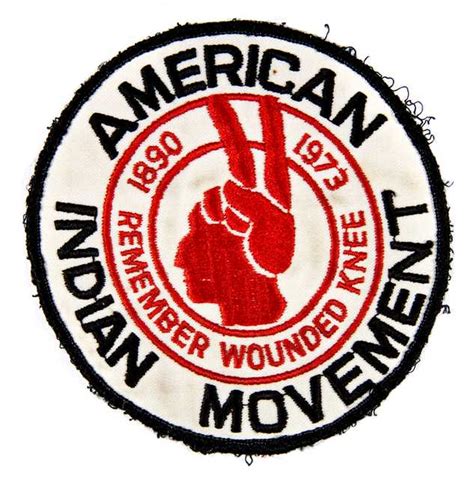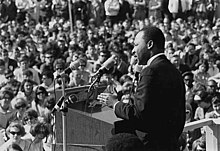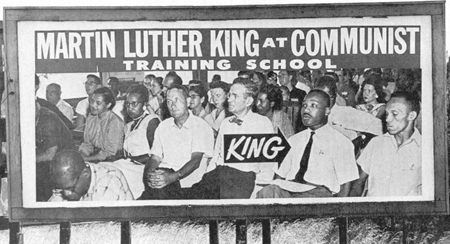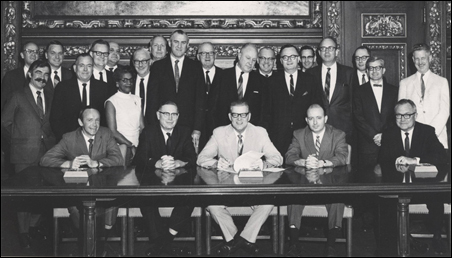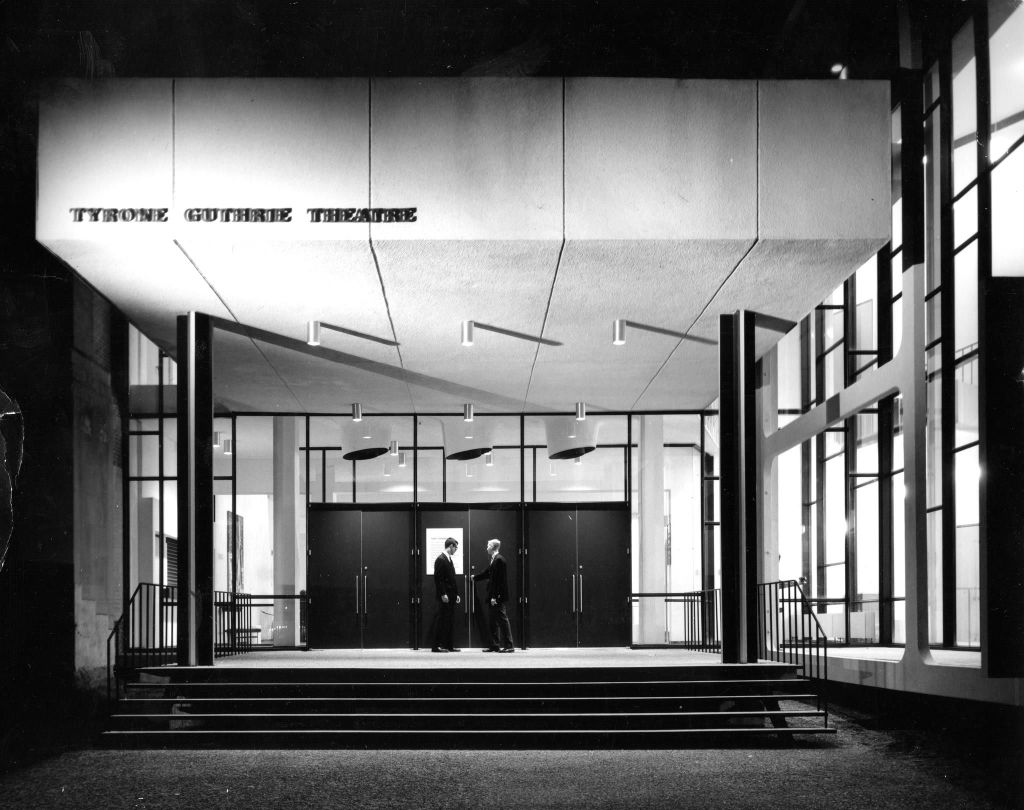July 28, 1968
Two prisoners, Clyde Bellecourt and Eddie Benton-Banai, met in Stillwater State Penitentiary about 1962. These new friends formed the Indian Folklore Club to improve the stay for each other and their fellow Native inmates. After meeting Dennis Banks and Russell Means six years later, the trio form the heart of the American Indian Movement. This pan-Indian, anti-imperialist, and anti-racist organization sought to improve the civil rights of Native Americans in Minneapolis, Minnesota. *
Though it may be a bit shocking to the modern liberal Minneapolitan, many young Indians were introduced to the city only as recently as fifty years ago. Two fairly obscure laws passed about a dozen years before created their incentive to come to town. Public Law 959 a.k.a. the Indian Relocation Act of 1956 was intended to encourage their young tribal members to leave the reservations and assimilate into large cities. ** Public Law 280 proposed to move entire tribes that were farther down the path of assimilation from the umbrella of Federal Law and under the jurisdiction of State law. **
Much of AIM’s leadoff efforts were to assist the new urban members of their tribal branches with their legal questions.
These folks were often thought of as “transnationals” in that they were simultaneously members of First Nations (tribes) and American citizens. Quickly they began AIM Patrol,*** a citizen watch group to challenge police brutality against Natives. Further, they played a pivotal role in the creation of the Legal Rights Center of Minneapolis, a resource that provides free legal aid to the poor. ****
Actus, in Latin, is the root word for activist meaning ‘doing’, ‘a driving force’, or ‘an impulse’. Such a broad word is apropos for AIM and the energy of its charter members.
Look at the impact on the early 1970’s in the following timeline of its’ various actions and events.
November 1969 – Occupation of Alcatraz
This point of action by AIM greatly impacted U.S. government’s decision to abandon they policy of Termination and Relocation.
October 1972 – Trail of Broken Treaties
Cross country traveling protest birthed the “Twenty Point” portion paper which defined points of treaties protestors believed the U.S. government had failed to fulfill.
(A few examples.)
“Restore terminated rights of Native Nations.
Repeal state jurisdiction on Native Nations (Public Law 280).
Provide Federal protection for offenses against Indians.
Abolish the Bureau of Indian Affairs.
Create a new office of Federal Indian Relations.
Remedy breakdown in the constitutionally prescribed relationships between the United States and Native Nations.
Ensure immunity of Native Nations from state commerce regulation, taxes, and trade restrictions.
Protect Indian religious freedom and cultural integrity.Recognize the right of Indians to interpret treaties.” *
February 27, 1973 – Pine Ridge – Wounded Knee Incident
For 71 days, the town of Wounded Knee, South Dakota was occupied by AIM while they battled U.S. officials.This site was chosen because it was significant to the Wounded Knee Massacre in 1890. Two U.S. officials were seriously wounded, a civil rights activist disappeared, and two Native Americans died.
For most of our North Star citizens it came as a shock that things were so bad for Native Minnesotans that they would take up arms. Perhaps, no event in the 20th century did more to underscore the dysfunctional relationships and mistrust between our State and Federal governments and America’s First Nations. Further, our laws seem to not be the best vehicle to convey the complexities of the human heart and emotional intelligence. Hear, if you can, the words of one of AIM’s most potent members.
“Being is a spiritual proposition. Gaining is a material act. Traditionally, American Indians have always attempted to be the best people they could. Part of that spiritual process was and is to give away wealth, to discard wealth in order not to gain.” Russell Means
And so we turn from this moment in history to the face of the Eternal One. Dear Father, how we need You to come and stand between us; the Native American Minnesotan, and the Adopted Minnesotan. Can we sit in Your circle and wait on You together? We remember, right now, that we are all co-members of Your Creation, and that all who turn to You will be saved from our narcissism past, present, and future. Blessed are You, King of the Universe, who gives us the omnipotence and omnipresence of the Messiah!
We begin our prayer journey with gratitude for G-d ordained meetings. Only You could have known how Clyde Bellecourt and Eddie Benton – Banai would become friends and allies, (in prison no less), and cast a vision for the Indian Folklore Club. We thank You for their vision for a movement that would include all tribes protecting the future from imperialism through the present practice of human rights and civil rights. We thank You for the strong rope made when the cords of Dennis Banks and Russell Means were added to the founders. (Bind us together Lord! Colossians 3:14) Will You bless them, the land of Minnesota, and their ascendants by the authority of the Lord Jesus?
Lord, we acknowledge to You the incompleteness of our laws, and their flaccid lack of power to fulfill the aims of the law. Our laws, too often, force compliance of new outcomes rather than taking the painful, yet relationally honest path of persuasion! In this case, we remember to You Public Law 959 and Public Law 280. We see the positive outcomes that the legislators hoped for; a Native Population not isolated from the growth and opportunities of our society through remaining landlocked on their tribal grounds or reservations. Lawmakers, it appears, wanted young Indians to also see their version of the American dream; not remain shut-ins of their Res.
Lord, we need You to forgive the judgments of the proponents of Law 959 and Law 280 towards Native Minnesotans. Where they have judged our Native brothers and sisters, they have offended Your Image. Will You forgive us this sin so recognized by the American Indian Movement?
Conversely, will You forgive the judgements of those opponents of Laws 959 and 280? Where Native Minnesotans have judged our Adopted Minnesotan family, they too have offended Your Image. Will You forgive us this sin committed against detractors past and present?
We acknowledge the Spirit of Force and the Spirit of Compliance present in laws made far away from the communities they most effect. Though centuries after the fact, the force of such laws echo more of the ring of aristocracy than democracy. Could our Native neighbors felt the transference of centuries of the Canon Laws of the Vatican City, the Napoleonic Code, the Kings Bench, and Court of Chancery within our legal system? Free One, will You take this “force of law” up, out, and onto the Cross of Christ? Will You create the chesed within our legal system, both present and future, to emulate the trust and just and heartfelt compliance of Your Court in heaven? How much we need, invite, and desire the Justice of a Holy Father who is faithful and true in his judgments towards all creation! How we yearn for You to come and make us all one under Your good and right legal system!
As a finale, we consider what happens to a nation which has a worship dysfunction.
When Your Chosen Ones had seasons of disrupted worship, they split their anointed heritage into the tribes of Israel and Judah. Let’s see what Mr. Bellecourt observed as a bitter root cause necessitating AIM. “We were prohibited from practicing our spirituality. It was illegal to be in our country. The Movement changed all that.” —from Bellecourt’s 2016 memoir, “The Thunder Before the Storm”
In a similar vein, I would posit that many of the greatest failures of our Republic stem from a representative class that has morphed into a ruling class. When those making the law fail to acknowledge Adonai, they forget that they too are subjects under judgment. This lack of humility, in large part, is responsible for laws and mandates that have broken faith and relationship between government and the citizenry. Is this why Your Kingdom commands worship? Is this why the Great Ones and Elders of Heaven routinely remove their crowns and prostrate themselves in a state of total respect and awe of Your Justice?
No more “Wounded Knees” Lord unless they be in adoration! Let us be a people who bow together! Let us be a people of humility! Let us remember the cost of our tribe’s freedom today in gratitude! You took the rap for every nation so that we could reign in honesty and innocence!
“And they sang a new song, saying: “You are worthy to take the scroll and to open its seals, because you were slain, and with your blood you purchased for God persons from every tribe and language and people and nation. You have made them to be a kingdom and priests to serve our God, and they will reign on the earth.”” Revelation 5:9,10
P.T.H. cites timeline formerly at this URL: mnhs.org/about/dipity_timeline.htm or https://www.mnopedia.org/group/american-indian-movement-aim
** Matthiessen, Peter (1980). In the Spirit of Crazy Horse. New York: The Viking Press. pp. 28–29.
*** Wilson, Brianna. AIM Patrol, Minneapolis. Minnesota Historical Society. December 28, 2016. Internet. https://www.mnopedia.org/group/aim-patrol-minneapolis
**** Internet. https://www.legalrightscenter.org
http://www.aimovement.org (Much of the “Twenty Points” strategy is credited to activist Hank Adams.)
* https://aimovement.weebly.com/timeline.html
* https://www.brainyquote.com/quotes/russell_means_582021
** Bellecourt, Clyde and Lurie, Jon. The Thunder Before the Storm. Minnesota Historical Society Press; 1st edition (November 1, 2016)
